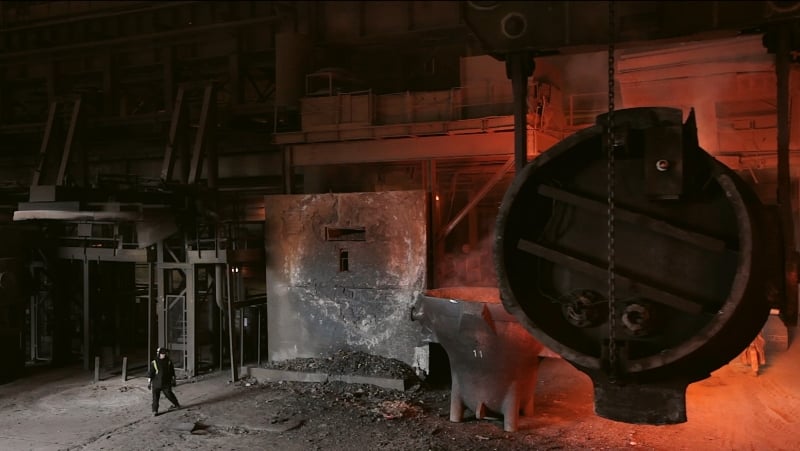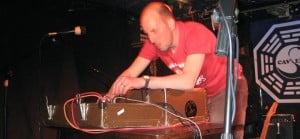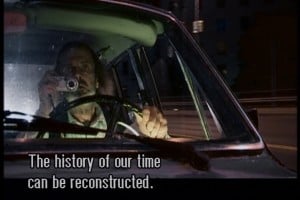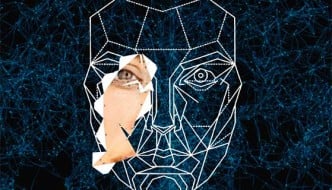Film Review: The Future Is Not What It Used To Be
November 15, 2015

Still from Melt Shop, a film by Andy Brown and Nathan Gibson
It is three totally absorbing acts for the price of one at the Delius Art Centre in Bradford in an event to augment the radical exhibition Notes from Technotopia at the University of Bradford’s Gallery II. The evening started with Andy Brown and Nathan Gibson’s short film Melt Shop. This corrects the erroneous notion that steel is no longer made in Sheffield and environs. The film shows living evidence that steel production is stronger than ever before, albeit in a totally different form than in previous decades.
The film is beautifully made, reminiscent of some of the scenes in Koyaanasqatsi, with the complex industry almost humanised on screen. The commentary describes the exhilaration of the experience in the production plant and this sense of excitement comes across in the film well.

Neil Campbell at Recon Festival
Following this is a twin projection of films by avant-garde filmmaker David Larcher accompanied by Vibracathedral Orchestra and Astral Social Club’s Neil Campbell with immersive quadrophonic noise. The visuals on one side are a visual explanation of the void, a term which is far more complex than I as a non-scientific thinker had ever considered.
The older footage is more ambient with floating pulses of colour and geometric patterns which pump in synch with Campbell’s industrial sounds. The soundtrack is very stomach-churning and bowel-quaking in the style of early Throbbing Gristle and Cabaret Voltaire from the 80s. While the later footage is quasi-educational and plays around with repeated graphics, constantly distorted and morphed to intrigue or perhaps frustrate.

The Future is Not What It Used To Be by Mika Taanila
The evening climaxes with a screening of The Future is Not What It Used To Be by Mika Taanila, a portrait of the nuclear physicist/artist Erkki Kurenniemi (b. 1941), one of the unsung pioneers of early electronic art. Kurenniemi considers man as a machine and foresees a giant brain capable of surpassing any kind of human intelligence.
The electronic music experiments are quite comical, including a quite sexy scene where the noises are created by human touch. It goes from this to space exploration when art is made a primary function to avoid the boring and banal existence without earthly pleasures. It is a whacky and thoroughly enjoyable end to a well-curated and innovative mix-up of an evening.
Reviewed by Rich Jevons on Saturday 14 November at Delius Art Centre. See Rich Jevons’ interview with curator Andy Abbott here.



Comments